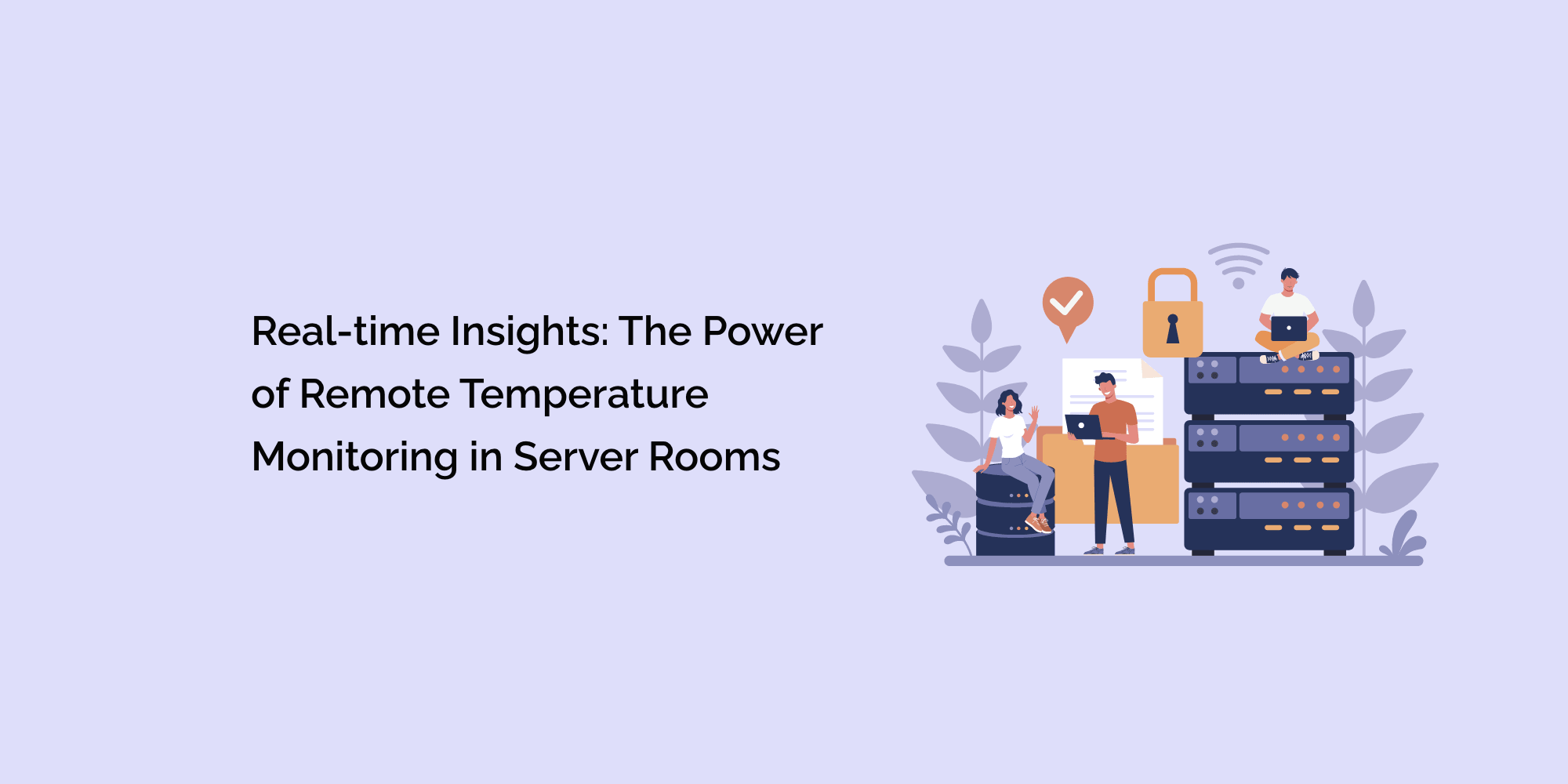In today's fast-paced digital landscape, server rooms are the backbone of any organization, handling critical data and powering various applications and services. The reliable and efficient operation of server rooms heavily relies on maintaining optimal environmental conditions, especially temperature. Fluctuations in temperature can lead to hardware failures, unexpected downtime, and potential data loss, impacting business productivity and profitability. To address these challenges effectively, remote temperature monitoring solutions have emerged as a powerful tool, providing real-time insights into server room conditions. In this comprehensive blog, we will explore the significance of temperature monitoring in server rooms, the advantages of remote monitoring, and how it empowers organizations with real-time insights to optimize performance and prevent disruptions.
The Importance of Temperature Monitoring in Server Rooms:
Temperature monitoring is crucial in server rooms for the following reasons:
-
Hardware Reliability: High-performance servers and hardware components require stable temperatures to operate optimally and extend their lifespan.
-
Preventing Downtime: Overheating can lead to hardware failures and unexpected downtime, disrupting critical services and causing financial losses.
-
Energy Efficiency: Effective cooling management based on real-time temperature data allows organizations to optimize energy consumption and reduce operational costs.
-
Early Issue Detection: Real-time temperature monitoring enables organizations to proactively detect temperature fluctuations and take immediate corrective action.
- Ensuring Data Integrity: Temperature monitoring safeguards valuable data by reducing the risk of temperature-related hardware failures and data corruption.
The Power of Remote Temperature Monitoring:
Remote temperature monitoring solutions offer numerous advantages over traditional methods, empowering organizations with real-time insights and enabling proactive measures:
-
Real-Time Visibility: Remote monitoring provides real-time access to temperature data, allowing organizations to monitor server room conditions from anywhere at any time.
-
Immediate Alerts and Notifications: Remote monitoring systems send instant alerts and notifications when temperatures exceed predefined thresholds, facilitating quick responses to potential issues.
-
Proactive Issue Mitigation: Remote monitoring enables organizations to take immediate action to address temperature fluctuations and prevent potential hardware failures.
-
Historical Data Analysis: Remote monitoring systems store historical temperature data, helping organizations identify trends and patterns for predictive maintenance and performance optimization.
-
Cost-Efficiency: Remote monitoring reduces the need for physical presence in server rooms, saving time and resources while improving efficiency.
- Scalability: Remote monitoring solutions can scale with organizational growth, accommodating additional server rooms and locations.
How Real-time Insights Optimize Server Room Performance:
Real-time insights provided by remote temperature monitoring offer several benefits for optimizing server room performance:
-
Improved Hardware Reliability: Proactively monitoring temperature fluctuations ensures that hardware components operate within recommended ranges, reducing the risk of hardware failures and extending equipment lifespan.
-
Minimized Downtime: Early detection and swift response to temperature-related issues help prevent server room outages and minimize downtime.
-
Enhanced Energy Efficiency: Real-time insights into temperature conditions enable organizations to optimize cooling systems for energy efficiency, leading to reduced operational costs.
-
Predictive Maintenance: Analyzing historical temperature data allows organizations to predict potential hardware failures and schedule preventive maintenance to mitigate downtime risks.
- Remote Troubleshooting: Remote temperature monitoring enables IT teams to troubleshoot issues and make data-driven decisions without physical presence in server rooms.
Implementing Remote Temperature Monitoring Solutions:
To implement remote temperature monitoring effectively, organizations should consider the following steps:
-
Selecting the Right Monitoring System: Choose a remote temperature monitoring system that meets the organization's specific needs, including real-time monitoring, alerting capabilities, and historical data storage.
-
Installing Temperature Sensors: Install high-quality temperature sensors strategically in server rooms to ensure accurate and comprehensive temperature monitoring.
-
Setting Thresholds and Alerts: Define temperature thresholds and configure alerts to receive immediate notifications when temperature deviations occur.
-
Integrating with Existing Infrastructure: Integrate remote temperature monitoring systems with existing infrastructure management platforms for centralized monitoring and data analysis.
- Training and Familiarization: Train IT teams and staff on using the remote monitoring system effectively and understanding the insights provided.
The Future of Remote Temperature Monitoring:
As technology continues to evolve, the future of remote temperature monitoring holds exciting prospects:
-
Artificial Intelligence Integration: AI-powered remote monitoring systems can learn from historical data and provide predictive insights for even more proactive maintenance.
-
Edge Computing: Edge computing combined with remote temperature monitoring will enable organizations to process temperature data closer to the source, improving response times and reducing data transfer costs.
-
Enhanced Security Measures: Remote monitoring solutions will continue to improve security measures to protect sensitive temperature data and prevent unauthorized access.
- IoT and 5G Connectivity: IoT-enabled temperature sensors and 5G connectivity will enhance the efficiency and reliability of remote monitoring solutions.
Conclusion:
Remote temperature monitoring solutions have revolutionized the way organizations manage and optimize their server rooms. Real-time insights into temperature conditions empower organizations to proactively prevent hardware failures, minimize downtime, and optimize energy efficiency. As technology continues to advance, remote temperature monitoring will play an increasingly critical role in ensuring the reliable and efficient operation of server rooms, safeguarding valuable data, and supporting the digital transformation of businesses and organizations.
By embracing remote temperature monitoring solutions and leveraging real-time insights, organizations can enhance their IT infrastructure's reliability, reduce operational costs, and achieve greater productivity and profitability in the digital age.








